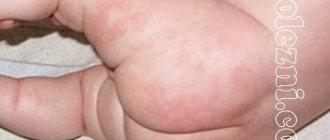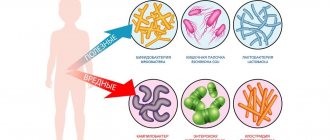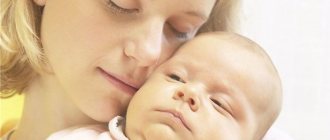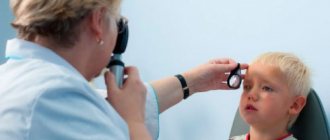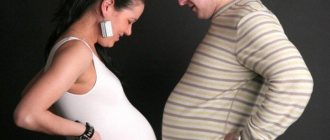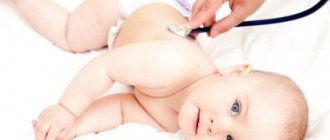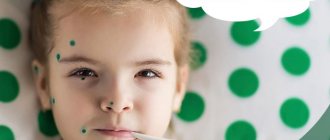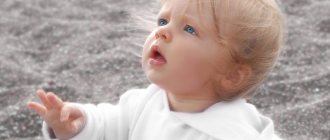What is torticollis in newborns?
In general, torticollis in infants is classified as congenital or acquired. The most common type is congenital muscular torticollis in a child.
Although babies have this condition when they are born, parents may not notice it until the children are several weeks old, as babies at this age begin to have more control over head movement.
Torticollis is relatively common in newborns. Boys and girls have the same probability. Torticollis in a child can develop at the age of 3 months or may already be present at birth.
It can be frustrating for parents when they notice that their baby has symptoms of torticollis—the head is tilted, or the baby has difficulty turning its neck.
But most children do not feel pain from torticollis. And, fortunately, the child's condition usually improves with simple head position changes or stretching exercises that can be done at home.
Torticollis in a child
Based on the time of appearance, congenital and acquired torticollis in children is distinguished. The child has congenital torticollis at the time of birth. Most often, mothers' medical history reveals a pathological course of pregnancy (severe forms of toxicosis, threatened miscarriage, oligohydramnios), injury to the fetus, multiple births, fetal position abnormalities (the umbilical cord entwined around the baby's neck, transverse position, breech presentation); disruption of the mechanism of labor (use of obstetric aids, narrow pelvis, weak labor and its stimulation) and birth by cesarean section, which may result in birth injury to the newborn. The occurrence of acquired torticollis in a child or adult is possible at any age. Depending on the side of the lesion, torticollis in a child can be right-sided, left-sided or bilateral.
Taking into account the mechanisms leading to the development of pathology, they distinguish between myogenic (muscular), osteogenic (bone), arthrogenic (articular), neurogenic, dermo-desmogenic and secondary (compensatory) torticollis in a child.
Congenital muscular torticollis in a child is associated with impaired development of the sternocleidomastoid (sternocleidomastoid) or trapezius muscle. In this case, there may be underdevelopment of the muscle, its ischemic contracture with insufficient blood supply, scarring and shortening due to tearing of the muscle fibers. Often, the mechanism of torticollis in a child combines a developmental defect and muscle injury during childbirth. Cases of acquired muscular torticollis in a child can occur with acute and chronic myositis of the sternocleidomastoid muscle, myositis ossificans, sarcoma, Grisel's disease, etc.
Congenital osteogenic and arthrogenic torticollis in a child is a consequence of developmental disorders of the cervical spine: fusion of the cervical vertebrae (Klippel-Feil syndrome), wedge-shaped cervical vertebrae, accessory vertebrae, cervical ribs, etc. Acquired osteoarticular torticollis in a child may be etiologically related with rotational subluxation and dislocation of the atlantoaxial joint, fracture of the cervical vertebrae, their destruction due to tuberculosis, osteomyelitis, actinomycosis, tumor lesions.
Congenital neurogenic torticollis in a child is most often a consequence of intrauterine hypoxia, intrauterine infection and the associated muscular dystonia syndrome; acquired develops due to cerebral palsy, previous polio, encephalitis, central nervous system tumors, Arnold-Chiari malformation. Painful (reflex) torticollis can occur with diseases of the parotid glands, mastoid process, and clavicle.
The congenital form of dermo-desmogenic torticollis in a child occurs with pterygoid neck (lateral skin folds on the neck), Shereshevsky-Turner syndrome. Acquired dermo-desmogenic torticollis occurs with extensive skin scars caused by deep burns, injuries, inflammation of the lymph nodes, phlegmon of the neck tissue, which cause a pathologically fixed position of the head.
Compensatory or secondary torticollis in a child is acquired by origin; it is usually associated with pathology of the eyes (strabismus, astigmatism) or inner ear (labyrinthitis, sensorineural hearing loss). The development of acquired (adjustmental, positional) torticollis in practically healthy children is possible with improper care: constant incorrect positioning of the child and carrying in the arms with the head turned to one side, one-sided placement of toys, etc.
Signs of torticollis
Babies with torticollis will move like most other babies. Except when it comes to activities related to turning.
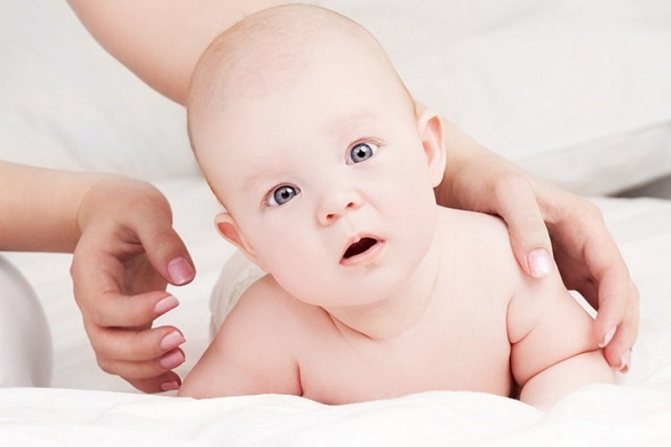
A child with torticollis is characterized by several features:
- May tilt head in one direction (difficult to notice in very young children).
- Prefers to look at others over one shoulder. Instead of turning around and following with your eyes.
- If mom is breastfeeding, babies have difficulty feeding on one side or prefer only one breast.
- The baby works hard to turn towards the parent and becomes frustrated when it is not possible to turn its head completely.
Some children with torticollis also develop asymmetry in the shape of the head and face (positional plagiocephaly) from lying on one side all the time. Or a small bulge or lump that looks like a knot forms in the tense muscle.
Signs and symptoms of torticollis in infants
The first manifestations of muscular torticollis can be noticed not immediately after birth, but after 2-3 weeks of life. At 4 weeks, the baby has not yet learned to hold his head, so it is difficult for parents to notice the pathology on their own; most often the doctor talks about it at a scheduled appointment at 1 month. But mothers still need to be on alert and know how torticollis manifests itself in a newborn baby.
How to determine torticollis in an infant:
- The head is set low, constantly turned from the midline to one side;
- The baby looks at others over one shoulder, instead of turning completely, which indicates a decrease in motor activity in the cervical region;
- at the age of 3 weeks, thickening and significant compaction of the muscle can be felt. When performing the manipulation, the child will be capricious and nervous.
- When breastfeeding, he experiences difficulties on one side, so he sucks inactively or only suckles on one breast;
- All attempts to turn the head completely in the other direction are unsuccessful; when the head is forcibly turned, the child feels discomfort;
- Due to neck deformation, plagiocephaly can occur - asymmetry in the shape of the head and face, which occurs from constantly lying on one side. A small bulge resembling a knot may also form in the tense muscle.
- Over time, the manifestations of torticollis will increase.
You need to carefully monitor the baby’s condition when there is a birth injury, if the mother’s medical history from the maternity hospital indicates that the birth took place urgently, labor stimulation measures were carried out or an emergency caesarean section was performed, or weakness of labor forces was observed.
During childbirth, torticollis can form due to damage to the muscle due to rough manipulations: vacuum extraction, pulling on the head, birth in a breech presentation with improper removal and tilting of the head.
Symptoms of torticollis in a baby in the photo
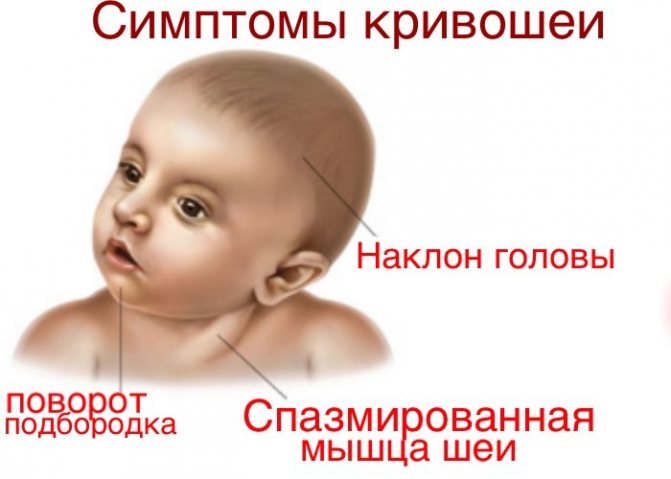
If you notice that your child has great difficulty turning his neck and constantly finds this one position, despite the fact that you turn him over and change the position of his head when he is lying down, contact your pediatrician.
Causes of torticollis in newborns:
- Congenital torticollis in children often occurs due to tightness of the muscle that connects the chest and collarbone to the skull. This tension could arise from the baby's position in utero (with the head tilted to the side) or because the muscles were damaged during childbirth.
- Much less commonly, congenital torticollis in infants is caused by abnormalities in the bones of the neck - the cervical vertebrae.
Bones may be abnormally formed. This condition is known as Klippel-Feil syndrome. This syndrome causes problems in the child not only with the neck. Many children have other difficulties, especially with hearing and kidneys. In addition, stretching exercises recommended for torticollis are not only ineffective, but also potentially dangerous for a child with Klippel-Feil syndrome. - Torticollis is sometimes associated with other diseases of infancy, such as hip dysplasia.
- Rarely, congenital torticollis can be inherited. Or it may be the result of a more serious condition, such as a brain or spinal cord tumor, that damages the nervous system or muscles.
Causes of torticollis in newborns
- Deformation of one or more vertebrae, structural disturbance;
- If there is excessive unilateral pressure on the fetus of the uterus, the head is not installed correctly;
- With intrauterine inflammation of the muscle, inflammation forms in a chronic form, the muscle becomes shorter and loses its elasticity;
- During a difficult birth, the muscle may tear and the muscle fibers will move into the tendons. A scar is formed in this place, and growth lag occurs in the muscles along the entire length.
- For malformations of the mastoid muscles.
Most orthopedists believe that torticollis in newborns is primarily a congenital defect, most often acquired during childbirth. Babies born even by caesarean section are not immune from this disease. It is worth noting that in infants with breech breech it is more common than in others. To accurately determine the cause of this diagnosis, consultation with specialists is required: Pediatrician, Orthopedist, Neurologist.
Photos of newborns with torticollis
Video about torticollis
It is better not to delay the treatment of torticollis, but to start at two weeks of age. The forced position of the baby's head can lead to asymmetry of the face and skull. In older age, left untreated torticollis leads to scoliosis (curvature of the spine) and facial deformation. The older the child, the more difficult it is to treat.
Diagnostics
If a newborn has torticollis with an underlying skeletal abnormality, X-rays or magnetic resonance imaging (MRI) may be needed to confirm the diagnosis.
The doctor will start by asking you a series of questions to help determine the type of torticollis your child has.
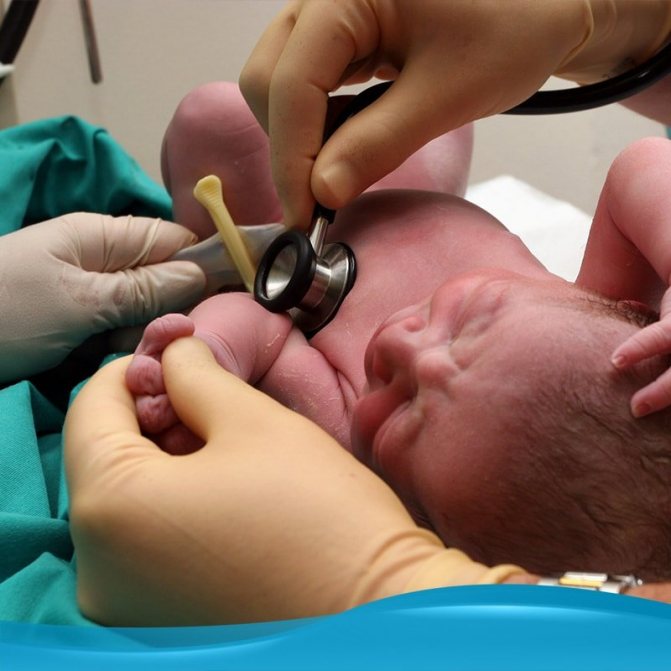
:
- What age is the child?
- When did you notice that your child had torticollis?
- Was there a head or neck injury?
- Does your child have a fever?
- Does the child have an infection?
- Has the child had any surgery on the head and/or neck?
- Have you noticed other symptoms?
- Was the child given any medications?
Causes of torticollis
Many experts say that the main reason for the development of torticollis in newborns is the intrauterine pathology of the sternocleidomastoid muscle, which can lose its own elasticity. During childbirth, the formed fibers often tear, and a scar of connective tissue appears in this place.
The list of reasons that can provoke the appearance of torticollis can be presented as follows:
- penetration of infection;
- uncomfortable position in the womb;
- pathological course of pregnancy;
- inflammatory processes in the cervical region;
- curvature of the spine.
Acquired torticollis manifests itself under the influence of the following reasons:
- infectious brain damage;
- inflammatory processes affecting the cervical spine;
- spinal injuries;
- skin damage;
- non-compliance by parents with child care rules;
- ENT disease.
The congenital form manifests itself under the influence of the following reasons:
- breech presentation of the fetus;
- developmental anomalies;
- sternocleidomastoid muscle rupture;
- intrauterine entanglement;
- cervical vertebrae injury;
- hypoxia or suffocation during childbirth.
There are a sufficient number of reasons for the appearance of torticollis in a child. This pathology can be successfully treated and eliminated without any particular consequences for the child’s body.
Survey and inspection
The doctor will perform a complete physical and neurological examination to determine the type of torticollis.
This inspection includes:
- checking the range of motion of the head and neck;
- palpation (feeling) of the muscle in the neck to see if there is a small lump or “pseudotumor”, which happens in about one in three cases of congenital muscular torticollis;
- looking for the presence or absence of asymmetry, irregularities in the face and head, to check for a condition called plagiocephaly.
It is important to check this because a newborn's head and face may develop unevenly due to constant head tilt to one side.
It is also necessary to examine the child’s hip joints to see how they rotate.
There is a high chance that babies with congenital muscular torticollis will develop hip dysplasia.
Your doctor may also request other tests. For example, ultrasound to look for certain abnormalities in the spine that may be a sign of rare but serious health problems.
What is torticollis?
Torticollis is a deformation of the cervical spine in newborns and children under one year old . With this pathology, the baby’s head always tilts unnaturally towards the shoulder, but at the same time is turned in the opposite direction. Sometimes a noticeable spinal deformity may be present.
The most common cases of torticollis occur in girls. Taking into account modern treatment methods, torticollis can be successfully eliminated. But you need to consult a specialist in time and make a diagnosis.
Classification of the disease
Modern medicine knows several types of torticollis. Experts divide the disease depending on its origin. The course of treatment is prescribed according to the stage of development of the disease, as well as depending on the factors that could provoke the disease in the baby.
It is not difficult to guess that the most common cause of torticollis in a child is birth trauma.
Depending on the origin, torticollis is divided into: congenital (the pathology appeared at the stage of intrauterine development of the fetus or during an unsuccessful birth), acquired ( the pathology developed after childbirth).
Both congenital and acquired torticollis, in turn, are also divided into several subtypes:
- Muscular torticollis . With the congenital type of the disease, the baby is born with a shorter sternocleidomastoid muscle. In the case of the acquired form, inflammatory processes occur, which can be caused by a chronic disease or some kind of injury, due to which the neck muscles are overstrained;
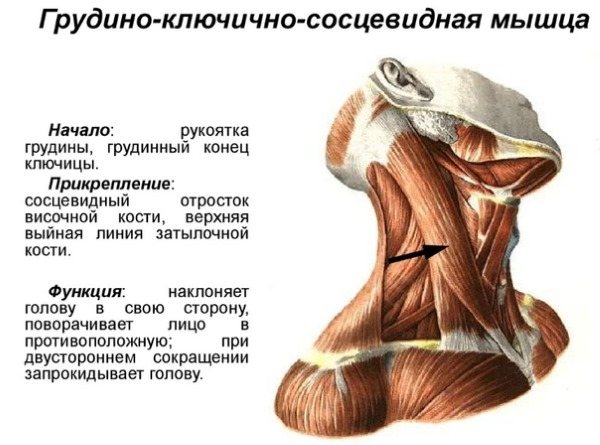
- Arthrogenic torticollis . With congenital deformation, fusion of the vertebrae or the presence of irregularly shaped areas may be observed. The acquired type of disease can be caused by fractures or defects in the tissues of the vertebrae in the cervical spine;
- Neurogenic torticollis. The congenital form of the disease can only manifest itself when there have been cases of infectious damage to the fetus followed by muscular dystonia during perinatal development. An acquired type of disease can occur as a result of tumors of the central nervous system, cerebral palsy or poliomyelitis;
- Dermo-desmogenic torticollis . The congenital form of the disease can be caused by folds in the neck or deformation of the joints. The acquired type of disease occurs due to inflammation of the cervical lymph nodes, burns or chemical damage to the skin.
The acquired form of the disease also has its own classification of subtypes of the disease.
Only the acquired form of torticollis occurs:
- Reflex. Occurs due to active inflammatory processes in the area of the clavicle, mastoid process or parotid glands. Most often, the cause is a spasm of the neck muscles;
- Compensatory . Deterioration of hearing or vision leads to the fact that the baby has to listen and peer harder, while straining the neck muscles more than usual. Because of this, muscle deformation and disease development occur over time;
- False. Increased tone of the neck muscles can lead to the development of torticollis from the moment the baby is born. With this type, you should immediately contact a neurologist;
- Installation. Most often it develops due to the negligence of parents who constantly place the baby on one side or apply it only to the right or left breast. In this case, young mothers need to alternate breasts when feeding and carefully ensure that the baby sleeps on a different side each time.
Prevalence and significance of the disease
Torticollis is a fairly common natural pathology . The disease is not overly dangerous, especially if you immediately notice unnaturalness in the baby’s movements. The disease is rarely diagnosed immediately in the maternity hospital, so you should be more attentive to the child’s behavior at home.
If defects are detected in a timely manner, you should immediately consult a doctor, who will prescribe a course of measures to correct the situation. Neglect of the disease can lead to the deformation continuing and leading to disability in the child at an older age.
Video: “Torticollis in a child: what to do?”
Treatment of torticollis
There is currently no way to prevent torticollis in newborns. However, with timely treatment, complications can be avoided.
You can improve the inherent shape of your neck by stretching the muscles. If treatment is started within a few months after birth, it can be very successful.
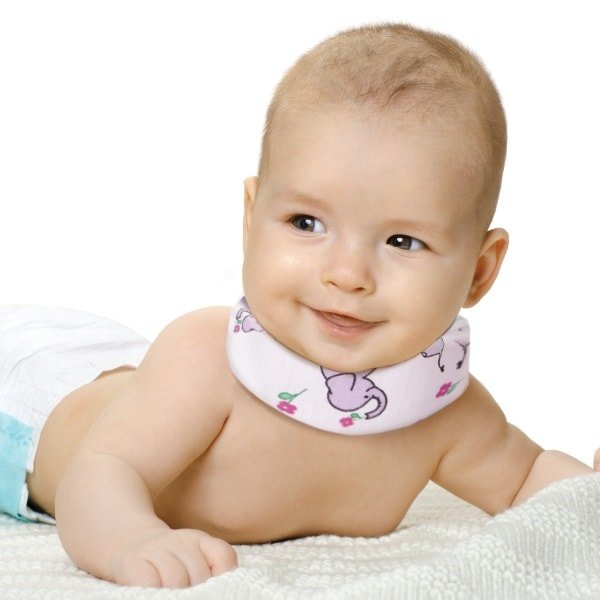
In approximately 15% of cases, neither physical therapy nor repositioning or home exercises will be effective. The next step is an orthopedic collar (Chance collar).
If this also fails, surgery may be recommended. Surgery for torticollis is quite simple. The intervention is minimal and involves loosening the stiff neck muscle. Surgery should always be followed by physical therapy (PT) to stimulate the muscles to grow properly again.
Treatment of torticollis in infants depends on its severity. Mild cases can often be resolved by changing head position, stretching, and targeting shortened neck muscles. In addition to this program, massage of the baby's neck and shoulders may also be required. In more severe cases, physical therapy may be recommended.
For infantile torticollis, it is recommended to use a special circle for bathing newborns. The neck circle for bathing babies promotes overall relaxation. This is useful for children with impaired muscle tone.
Where to begin?
If you suspect the presence of torticollis in a newborn, it is necessary, first of all, to see a pediatric orthopedist-traumatologist, and if pathology of the osteoarticular system is excluded, a neurologist, ENT doctor. It is possible that X-ray, ultrasound and other examinations will be required to verify the diagnosis.
Treatment of torticollis in an infant should begin immediately, but it must be remembered that this is a complex and lengthy process. They start with conservative ones, i.e. gentle techniques, and only if they are ineffective and it is impossible to cure the pathology completely, after the child reaches 2-3 years of age, a decision is made on surgical intervention. In this case, an incision or plastic lengthening of the damaged muscle is performed.
How to use a circle for bathing newborns?
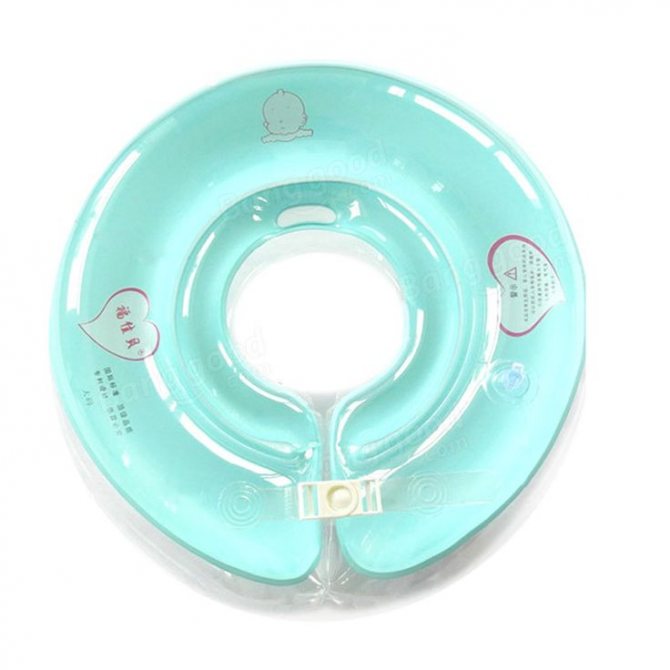
Before first use, the circle must be straightened and washed with soap.- If the circle has two chambers, then you need to inflate the lower chamber first, and then the upper one.
- If a child begins to act up while bathing with a circle, do not insist. Bathing should bring positive emotions. The process of bathing should only bring joy. Try again in a few days.
- Fill the bath so that the baby can swim comfortably with the circle. The depth should be sufficient for the child to push off with his feet and swim. When the water level is low, it will be inconvenient to use the circle for bathing newborns.
- Do not leave the bathroom even for a minute when you are giving your child a bath.
More details about how to bathe a newborn baby and what to prepare for water procedures are written in an article by a pediatrician.
The role of massage and exercise in the treatment of torticollis
In case of muscle hypertonicity, medical massage will be useful for infants. Massage for torticollis in infants is an effective method that can normalize muscle tone.

In children with torticollis, as a result of such exposure, clinical progress will be observed - the neck muscles will lengthen and at the same time strengthen.
Your doctor, massage therapist, or physical therapy specialist can give competent recommendations on appropriate exercises.
It's important that it's fun. It is necessary to turn treatment into a pleasant experience for the child.
When you first do the exercises, your child may protest because it is difficult for him.
It's important to start slowly. Do very short sessions at first.
If your baby begins to fuss or cry, move on to a different activity or try a different stretch or exercise. Gradually you will be able to perform these exercises for a longer period of time. An important principle is consistency and constancy.
Be sure to do the exercises daily. Do exactly the number of repetitions recommended by your doctor. You can also use your child's favorite toys to make exercise time more fun.
Continue to encourage your child to move his neck and turn his head in all directions, strengthening weak muscles. In addition to an exercise regimen prescribed by a doctor or therapist, another way to do this is through games. Treatment will be even more effective if it is integrated into your daily life.
For the most detailed information on how to properly massage newborns, see the article by a pediatrician.
Treatment methods for torticollis
If torticollis is a symptom of another disease, then the baby will undergo complex treatment. In what mode (inpatient or outpatient) it will be carried out and by what methods the doctor decides, based on the diagnosis and condition of the child.
Torticollis in newborns (signs, photos of such disorders are best studied by expectant mothers before birth) as an independent disease does not require hospitalization in the absence of complications, spinal deformities and visible external changes. Treatment (home and outpatient) is performed using gentle methods under the constant supervision of a doctor.
Massage
A key element of the treatment program, the goal of the procedure is to relieve excessive tension on one side of the neck and create conditions for muscle development on the other side, eliminating asymmetry. To perform a full-fledged therapeutic massage, you need knowledge and experience; in their absence, the procedure will be useless.
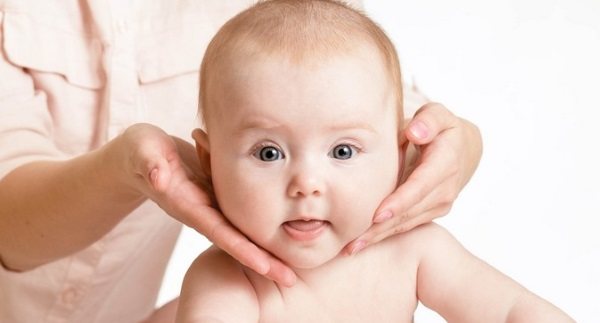
Torticollis in newborns can improve with regular massage.
There are a few simple techniques you can use at home:
- Alternately stroking the healthy and sore sides of the neck. Stroking movements can be alternated with light tapping with your fingertips.
- Massage the cheek on the affected side: first, stroking, then light tingling and vibration.
- Back massage in the area of the paravertebral muscles (the main back muscles that run along the spine): first, light stroking movements, then more vigorous rubbing.
- Light kneading of the collar area (shoulders are slightly compressed).
- Stroking the tummy, arms and legs, allowing the baby to relax.
All movements are performed at an average pace, without excessive effort, each of them is repeated 5-20 times. The maximum session duration is 10 minutes. The main rule: the massage should give the child pleasure; if he is worried, the procedure should be stopped immediately.
Gymnastics
Simple exercises will enhance the effect of the massage, strengthen the neck muscles and help the baby recover, but they can only be performed with the permission of the pediatrician: there are contraindications.
The sequence of exercises is as follows:
- The child is placed on his back, his head is fixed with his palms and carefully turned first towards the affected area, then in the opposite direction. If turning the head causes pain, the exercise is not performed.
- The baby is laid on his side with the sore side down, holding his head up. After a few seconds, you need to carefully remove your hands; this will cause the baby to slightly tense the neck muscles.
- The exercise is performed by two people: the child must be placed perpendicular to the edge of the table so that his head hangs down. One of the parents holds the baby's body, the other holds the head. The head support should be released very slowly, forcing the baby to tense the neck muscles.
- The starting position is the same, but now the head is carefully raised until the chin touches the chest.
All exercises are repeated 3-5 times twice a day.
Treatment with different positions
There are several simple and safe techniques based on long-term fixation of the child’s head in the correct position, which can successfully combat torticollis.
For example:
- Use a special ring that is placed under the child’s head. To prevent displacement of the body, you can purchase 2 rollers that are located along the body.
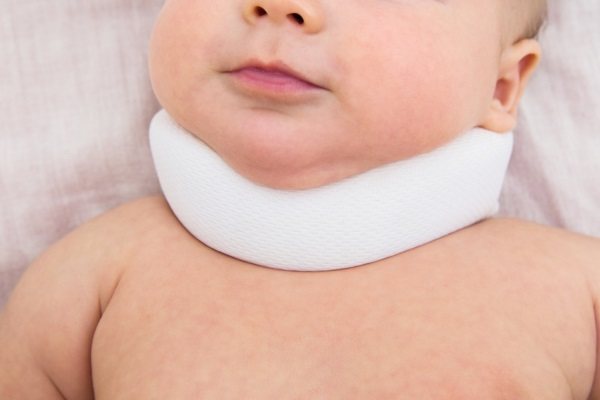
- Alternately place the baby on the sore and healthy side. In the first case, an orthopedic pillow is placed under the head, in the second, the pillow is removed.
- Place the crib so that bright light, the source of sounds, the front door, and toys are located on the affected side, forcing the baby to turn his head and gradually train his muscles.
- Take the baby in your arms, hold him close to you and turn his head, giving it the correct position and holding it with your cheek.
- Turn the child's back to you and again fix his head in the correct position.
Other methods of conservative treatment
A special neck pad in the form of a ring, which you can buy at a pharmacy or make yourself (cotton wool wrapped in gauze), will eliminate the pathological tilt of the head. On the recommendation of a doctor, the pad is replaced with a Shants collar, which fixes the neck in an anatomically correct position, preventing further development of the disease.
Water exercises using an inflatable ring that is placed around the neck will help the baby cope with the disease. Exercises can be performed in a pool or bath.
Physiotherapeutic procedures using medications prescribed by a doctor will speed up recovery, which will improve tissue nutrition, activate metabolic processes and normalize blood circulation in the area affected by the disease.
They are:
- electrophoresis with vasodilators (drugs that improve blood circulation;
- magnetic therapy;
- paraffin therapy - paraffin applications at a temperature of 41-44 ° C;
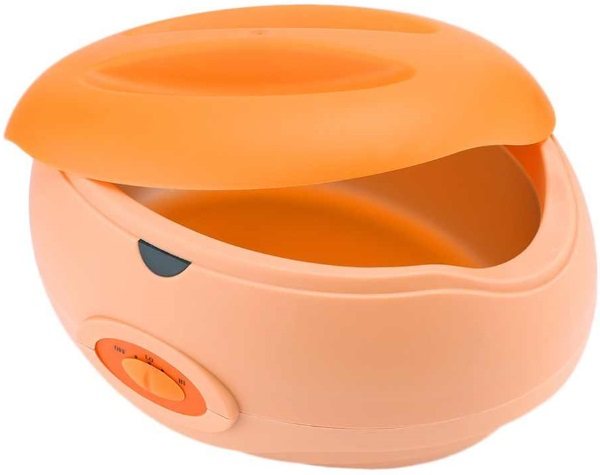
- low frequency pulse therapy;
- warming up.
On average, the duration of sessions is 20 minutes, the course of treatment is 2 weeks, more precise parameters are recommended by a doctor. All the gentle correction methods described above are based on the fact that the structural tissues of a child in the first months of life retain a high degree of plasticity. However, over time, their effectiveness inevitably decreases.
Over the age of 1 year, with some types of torticollis associated with damage to nerve endings, the patient may be prescribed drug treatment with tranquilizers, muscle relaxants and anticonvulsants. In particularly difficult cases it is necessary to resort to surgery.
Surgical treatment
Surgical methods for treating torticollis are used as a last resort if conservative treatment has failed. The operation is performed extremely rarely on infants, more often on children over 2 years of age.
The main indications for surgical intervention are:
- late detected disease;
- the presence of pronounced scoliosis and shoulder asymmetry;
- development of the disease despite treatment;
- limited (impossible) head movements.
The operation, during which endoscopic treatment of the affected muscle is performed, is performed under general anesthesia, after which only small incisions remain. The rehabilitation period is approximately six months, during which the patient is required to wear a Shants collar.
In young children, it is possible to completely restore the functionality of the muscle, but the older the patient, the less favorable the prognosis. In adults, secondary disorders persist, and the likelihood of relapse is quite high.
In especially severe cases, it is necessary to completely remove the sternocleidomastoid muscle (performed from the age of 4). After such an operation, a person is forced to undergo regular examinations by an orthopedist throughout his life in order to avoid the development of various pathologies.
How to fix torticollis at home?
Method of carrying a child
Be sure to alternate sides when carrying or holding your baby so that he can look in different directions. You'll probably find that you tend to carry your baby over one shoulder more often. In this case, the baby will always look in the preferred direction.
Change the shoulder you carry your baby on so your baby can see interesting things around him. Encourage him to turn his head in the direction of the tension.
Baby feeding position
Also alternate the side and position in which you hold your baby while feeding. Even infants often tend to prefer one breast and constantly strive to return to it.
When the baby sleeps
Your baby will try to look away or at something interesting, so be sure to alternate the direction in which he sleeps in the crib. Encourage your baby to turn his head in a direction that is more difficult for him as often as possible.
When the child is resting
If you carry your baby in a car seat or carrier, be sure to use pillows or special collars (Chance collar) for infants. Even a rolled up towel or blanket helps. Make sure your baby keeps his head and neck straight and not leaning to one side.
During the game
When playing with your child, always monitor your baby's position. Encourage him to stretch his neck and look in different directions.
Use toys and other interesting objects to encourage your baby to move his head. Place toys in the crib so that the baby makes an effort to look at them.
How to tell if a child has torticollis - the main signs
Children with torticollis will behave in the same way as healthy children until the moment they need to turn their head in the other direction. This disease does not cause any pain to the child, but there is some discomfort.
The main signs of torticollis:
- Head tilt to one side (difficult to notice in newborns).
- The child prefers to watch you over his shoulder instead of turning his head.
- When breastfeeding, the baby chooses only one breast; there is a problem with latching on the other.
- The baby works hard to turn its head in your direction, and is frustrated by its inability to do so.
- The presence of a small bump on the side of the baby's neck.
